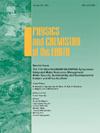Assessing critical flood-prone districts and optimal shelter zones in the Brahmaputra Valley: Strategies for effective flood risk management
IF 3
3区 地球科学
Q2 GEOSCIENCES, MULTIDISCIPLINARY
引用次数: 0
Abstract
Frequent flooding has become a persistent issue in floodplain regions, causing significant disasters during each rainy season due to insufficient disaster management planning. This study proposes a methodology to prioritize flood susceptibility areas at the district level and identify suitable sites for flood shelters using a combination of machine learning algorithms and multi-criteria analysis, supported by geospatial technology. Flood shelter suitability mapping was conducted using the Analytical Hierarchy Process (AHP), while flood susceptibility zones were assessed using four different machine learning models: Support Vector Machine (SVM), Random Forest, Decision Tree, and Naive Bayes. The integration of machine learning models with the AHP technique is vital in situations where conventional numerical models face challenges due to limited data, such as river discharge and water levels. The methodology includes a multicollinearity assessment to ensure the independence of selected flood-causing factors, information gain ratio to identify the most influential factors, Spearman's rho test to verify correlations between the machine learning models, and ROC-AUC along with statistical regression for validating the accuracy of the flood susceptibility maps. The findings indicate that the SVM algorithm, given its strong performance and effective training datasets, is recommended for areas with similar physical characteristics. The district-wise priority map generated from the weighted results of flood susceptibility assessments will be useful for flood management and mitigation strategies. Additionally, the study found that applying the AHP technique to determine flood shelter suitability, after assessing flood-prone areas, enhanced the efficiency of the flood management process. This research offers valuable insights for authorities to better address flooding and improve flood prevention and management efforts in floodplain regions, contributing to broader climate change adaptation strategies.
评估布拉马普特拉河流域的重要洪水易发区和最佳避难区:有效洪水风险管理战略
由于灾害管理规划不足,洪涝灾害频发已成为洪泛区的顽疾,在每个雨季都会造成重大灾害。本研究提出了一种方法,在地理空间技术的支持下,结合机器学习算法和多标准分析,在地区一级对洪水易发地区进行优先排序,并确定适合建造防洪避难所的地点。使用层次分析法(AHP)绘制了防洪避难所适宜性地图,同时使用四种不同的机器学习模型对洪水易发区进行了评估:支持向量机(SVM)、随机森林(Random Forest)、决策树(Decision Tree)和奈夫贝叶斯(Naive Bayes)。机器学习模型与 AHP 技术的整合在传统数值模型因数据有限(如河流排水量和水位)而面临挑战的情况下至关重要。该方法包括多重共线性评估,以确保所选洪水致灾因素的独立性;信息增益比,以确定最具影响力的因素;Spearman's rho 检验,以验证机器学习模型之间的相关性;ROC-AUC 以及统计回归,以验证洪水易感性地图的准确性。研究结果表明,鉴于 SVM 算法的强大性能和有效的训练数据集,建议将其用于具有相似物理特征的地区。根据洪水易发性评估的加权结果生成的地区优先级地图将有助于洪水管理和减灾战略。此外,研究还发现,在评估洪水易发地区后,应用 AHP 技术确定防洪避难所的适宜性,可提高洪水管理过程的效率。这项研究为有关部门更好地应对洪水和改进洪泛区的洪水预防和管理工作提供了宝贵的见解,有助于制定更广泛的气候变化适应战略。
本文章由计算机程序翻译,如有差异,请以英文原文为准。
求助全文
约1分钟内获得全文
求助全文
来源期刊

Physics and Chemistry of the Earth
地学-地球科学综合
CiteScore
5.40
自引率
2.70%
发文量
176
审稿时长
31.6 weeks
期刊介绍:
Physics and Chemistry of the Earth is an international interdisciplinary journal for the rapid publication of collections of refereed communications in separate thematic issues, either stemming from scientific meetings, or, especially compiled for the occasion. There is no restriction on the length of articles published in the journal. Physics and Chemistry of the Earth incorporates the separate Parts A, B and C which existed until the end of 2001.
Please note: the Editors are unable to consider submissions that are not invited or linked to a thematic issue. Please do not submit unsolicited papers.
The journal covers the following subject areas:
-Solid Earth and Geodesy:
(geology, geochemistry, tectonophysics, seismology, volcanology, palaeomagnetism and rock magnetism, electromagnetism and potential fields, marine and environmental geosciences as well as geodesy).
-Hydrology, Oceans and Atmosphere:
(hydrology and water resources research, engineering and management, oceanography and oceanic chemistry, shelf, sea, lake and river sciences, meteorology and atmospheric sciences incl. chemistry as well as climatology and glaciology).
-Solar-Terrestrial and Planetary Science:
(solar, heliospheric and solar-planetary sciences, geology, geophysics and atmospheric sciences of planets, satellites and small bodies as well as cosmochemistry and exobiology).
 求助内容:
求助内容: 应助结果提醒方式:
应助结果提醒方式:


